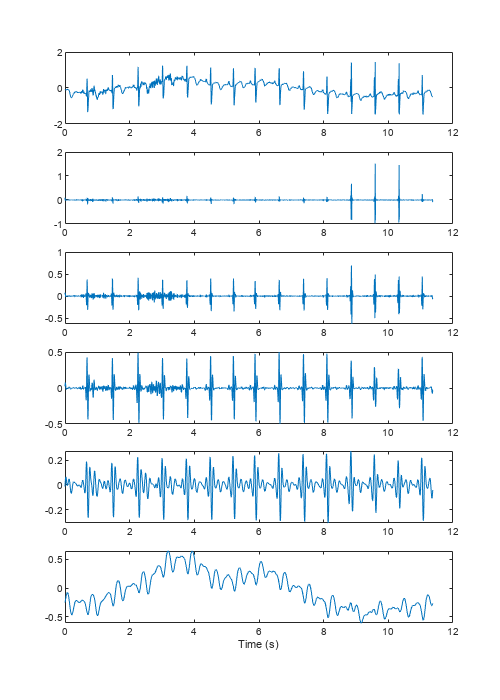modwtmra
Multiresolution analysis based on MODWT
Syntax
Description
mra = modwtmra(___,'reflection')'reflection',
modwtmra assumes that the column dimension of
w is even and equals twice the length of the original
signal.
You must enter the entire character vector 'reflection'. If you
added a wavelet named 'reflection' using the wavelet manager, you
must rename that wavelet prior to using this option. 'reflection'
may be placed in any position in the input argument list after
x. By default, modwtmra uses periodic
extension at the boundary.
Examples
Input Arguments
Output Arguments
References
[1] Percival, Donald B., and Andrew T. Walden. Wavelet Methods for Time Series Analysis. Cambridge Series in Statistical and Probabilistic Mathematics. Cambridge ; New York: Cambridge University Press, 2000.
[2] Whitcher, Brandon, Peter Guttorp, and Donald B. Percival. “Wavelet Analysis of Covariance with Application to Atmospheric Time Series.” Journal of Geophysical Research: Atmospheres 105, no. D11 (June 16, 2000): 14941–62. https://doi.org/10.1029/2000JD900110.
[3] Mesa, Hector. “Adapted Wavelets for Pattern Detection.” In Progress in Pattern Recognition, Image Analysis and Applications, edited by Alberto Sanfeliu and Manuel Lazo Cortés, 3773:933–44. Berlin, Heidelberg: Springer Berlin Heidelberg, 2005. https://doi.org/10.1007/11578079_96.
Extended Capabilities
Version History
Introduced in R2015b

